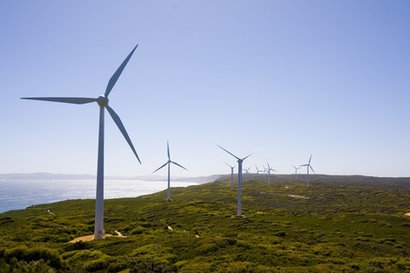
Clean Energy Council Chief Executive Kane Thornton said following the good news last week that the 2020 large-scale Renewable Energy Target (RET) would be met, there is currently no energy and climate policy to replace it – giving pause to many major investors. The Clean Energy Council has released a new policy briefing paper this week, which shows quarterly financial commitments in new renewable energy projects reached a high of over 4500 MW in late 2018, but have since collapsed to less than 800 MW in each of the first two quarters of 2019.
“Investors have been forced to balance their record enthusiasm for Australian wind and solar projects with a lack of national policy, growing threats of government interference in the energy market and a range of out-of-date regulations” Mr Thornton said. “With Australia’s coal-fired power stations ageing rapidly, it is essential new clean energy projects are built now to ensure lower power prices and improved reliability when these old clunkers retire from service.”
The analysis in Australia’s clean energy generation investment outlook finds that while large-scale renewable energy no longer needs subsidies, long-term policy certainty and regulatory reform are crucial to giving confidence to investors. Its release came as dozens of the clean energy industry’s senior executives met at Parliament House in Canberra on Tuesday for an evening reception with politicians and policymakers, which follows a forum to consider the end of the RET and what comes next.
Mr Thornton added that large-scale renewable energy was confronting a range of regulatory barriers, as a result of an energy grid and set of rules that were no longer fit-for-purpose and that the the industry is working closely with the Australian Energy Market Operator (AEMO) and the networks to address many of these issues in the short term. However, a lot of the problems are symptoms of the underlying issues – the need for strategic investment in the electricity network to service the best zones for renewable energy across the country and unlock more cheap, clean power.
“There is no excuse for a slow-down in investment in renewable energy as the industry begins unlocking the enormous potential of energy storage across Australia, effectively complementing renewable energy projects” Mr Thornton said.
More than 500 MW of large-scale battery projects have already been financially committed, along with more than 9000 MW of pumped hydro potential which has been identified. Thornton said that this demonstrates that there is no shortage of potential from energy storage to support the continued deployment of variable renewable energy projects and to meet peak power load as ageing coal-fired power stations exit the system. However investment in energy storage is challenging without market reform and clear policy that can reduce uncertainty and recognise the value that these projects provide to the energy system and market.
A more detailed summary of the current state and future outlook for investment in renewable energy and energy storage can be found in the briefing paper Australia’s clean energy investment outlook, which is available on the Clean Energy Council website. The document includes a set of recommendations for ensuring continued investment.
For additional information:

